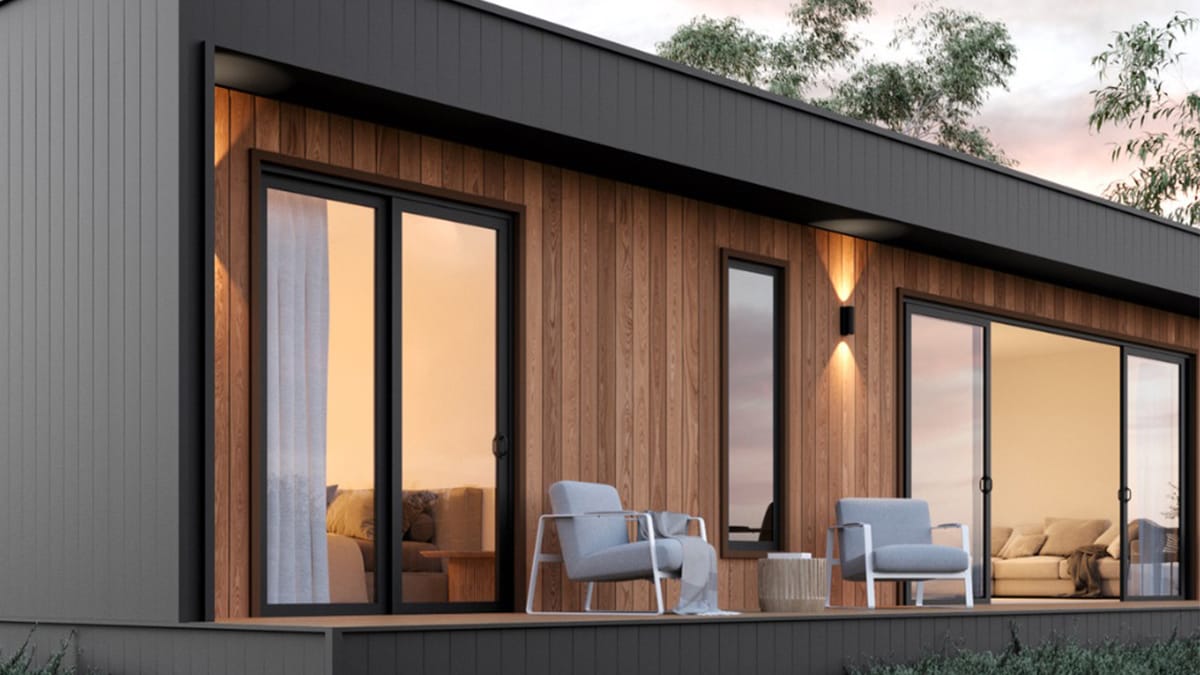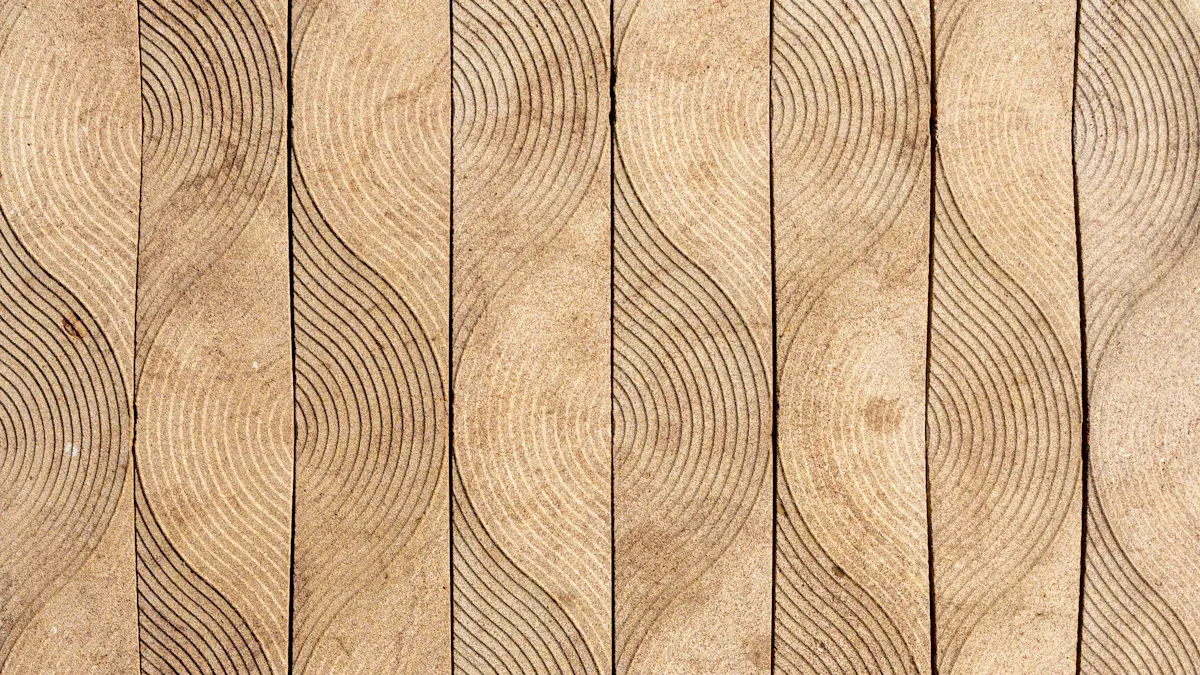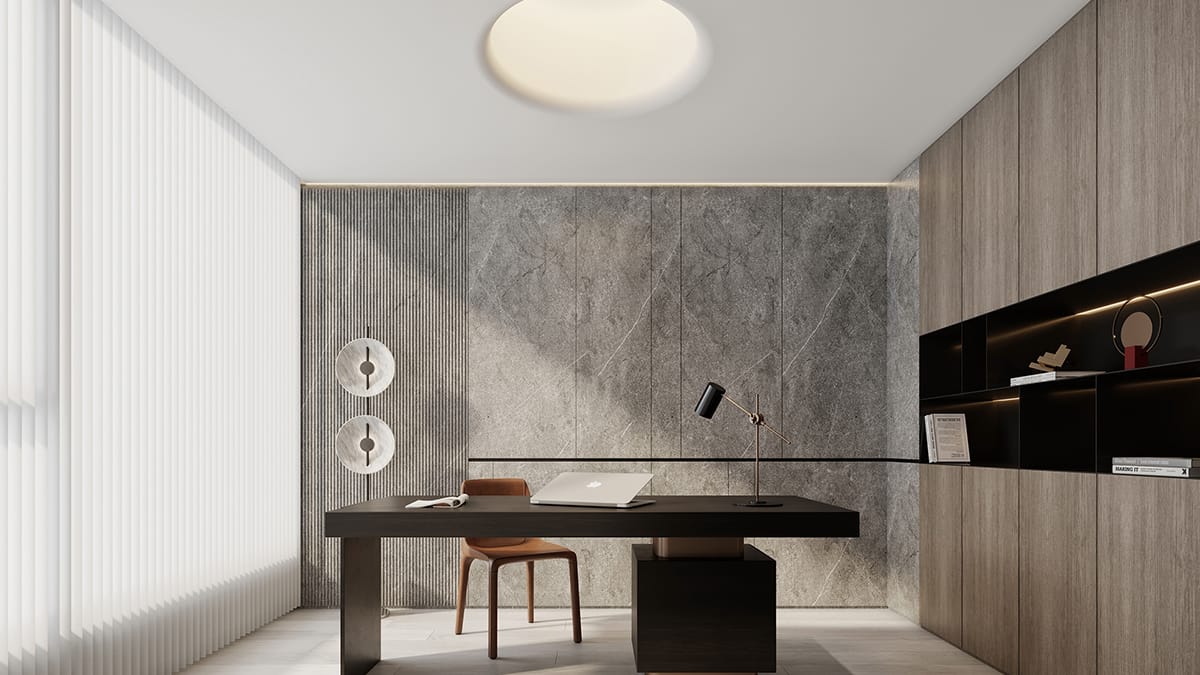
27 Oct What Are the Different Types of Fire Resistant Decorative Wall Panels
Table of Contents
When you want fire safety and style, you have many choices among the various fire resistant decorative wall panels types available. Some common types include gypsum boards, magnesium oxide boards, calcium silicate boards, and fiber cement boards.
Type of Wall Panel | Market Share Influence |
|---|---|
Gypsum Boards | Great fire resistance and easy to install |
Magnesium Oxide Boards | Very good fire resistance, used in many buildings |
Calcium Silicate Boards | Strong fire resistance and good strength |
Fiber Cement Boards | Great fire resistance and can be used in many ways |
These decorative wall panels not only keep your space safe but also enhance its aesthetic appeal. It’s important to understand fire ratings and regulations before selecting a panel. Many new buildings incorporate these fire resistant decorative wall panels types to effectively help prevent the spread of fires.
Key Takeaways
Pick fire resistant wall panels by looking at their fire ratings and what your space needs. – Think about how to install them and check local building rules to keep things safe and follow the law. – Choose panels that help stop fires and also make your space look nice.
Fire Resistant Decorative Wall Panels Types

When you look for fireproof wall panels, you see many choices. Each type has its own good points and fire ratings. Some are better for certain jobs than others. You should know which wall paneling fits your project. Some are cheaper, and some are more expensive. Let’s look at the most popular wall paneling types that give fire safety and style.
Type X and Type C Drywall
Type X and Type C drywall are very common fire resistant decorative wall panels types. Type X is mostly used in walls. Type C is often used in ceilings. Both types can stop fire for at least 1 hour if installed right. Type X panels follow ASTM C1396 rules. Type C panels are not listed by ASTM but meet the same rules as better Type X panels.
Tip: Type X drywall costs about $11 per sheet. Type C costs about $12 per sheet. The price is close, so pick what you need.
Panel Type | Fire Resistance Rating | Compliance Standard |
|---|---|---|
Type X | ASTM C1396 | |
Type C | Minimum 1 hour (5/8″) | ASTM C1396 |
You use these fireproof wall panels in homes and businesses. They are cheap and simple to put up. Always check local rules to make sure you follow fire safety laws.
MgO Decorative Wall Panel (MGO Board)
MgO boards are another strong pick for fire resistant decorative wall panels types. These panels do not burn and pass tough fire tests like ASTM E136 and ASTM E84. MgO boards often get a Class A rating. This means they do not burn or give off bad fumes.
Certification | What It Tests | Fire Rating Type |
|---|---|---|
ASTM E136 | Checks if materials are noncombustible | Noncombustible |
ASTM E84 | Tests how fire spreads on surfaces | Class A, B, C |
MgO fireproof wall panels do not soak up water or bend in wet places. You can use them in busy areas because they are strong. Their fireproof power lasts a long time. This makes them a top choice for inside and outside jobs.
Fiber Cement Panels
Fiber cement panels are a favorite type of wall paneling for fireproof wall panels. These panels use materials that do not burn. They get top fire ratings like Class A1 or A2 under EN 13501-1 and Class A under ASTM E84. You see them in schools, hospitals, and houses.
Advantages | Disadvantages |
|---|---|
Fire resistant: Class 1A fire rating, may lower insurance costs | Cost: About 40% more than vinyl siding |
Durable in all weather | Water can get behind panels and cause damage |
Fiber cement fireproof wall panels work inside and outside. They are tough and keep their shape in hot or cold. Make sure you install them right to stop water problems.
PU Stone Wall Panels
PU stone wall panels look like stone but have fireproof wall panels benefits. These panels are light, easy to put up, and cost less than real stone. They have a Grade B1 fire rating and meet CE and ISO9001 rules.
Feature | Certification |
|---|---|
Fine fireproof | Grade B1 (B1/B2) |
Waterproof + ECO-Friendly | CE / ISO9001 |
You can use PU stone fireproof wall panels in many places. They work in living rooms and business spaces. They are strong and can be used in many ways. Always check rules to make sure you meet fire safety.
Fire-Rated FRP Panels
Fire-rated FRP panels are good for wet or busy places. These fireproof wall panels come in Class A, B, and C ratings. Class A panels have the best fire resistance. They are best for places with strict rules.
Standard | Details |
|---|---|
Fire Resistance Rating | 1-2 hours for most commercial uses |
Flame Spread Index | Class A: 0-25 |
Smoke Developed Index | Class A: 0-450 |
You see fire-rated panels in bathrooms, kitchens, hospitals, and water parks. They do not let water, mold, or chemicals in. You must follow rules when you put them up to keep them fireproof.
MDF, PVC/Vinyl, and Wood Panels
MDF, PVC/vinyl, and wood panels are common wall paneling types. But they are not the best fireproof wall panels. MDF can burn or get soft in high heat. PVC panels do not soak up water and have some fire resistance. But they can give off bad gases if burned. Wood panels catch fire fast and can spread flames.
Note: These panels cost less and are easy to put up. You should use them where fire risk is low. Always check rules and fire ratings before you pick these types.
3D/Sculpted and Wainscoting Panels
3D and wainscoting panels make your space look nice. Many of these fireproof wall panels use WPC or PVC. They are treated with fire-retardant chemicals. They meet building rules for fire safety. They work well in kitchens, bathrooms, and busy places.
3D wall panels are good for accent walls in homes and businesses.
Wainscoting panels give style and fireproof help.
You should always check that these decorative wall panels meet fire ratings and rules for your job.
ICF and Fire-Resistant Particle Boards
ICF (Insulated Concrete Forms) and fire-resistant particle boards are advanced fireproof wall panels. ICFs can stop fire for 3-4 hours, tested by ASTM E119. Fire-resistant particle boards usually have a Class C rating.
Material Type | Fire Resistance Rating | Test Method |
|---|---|---|
Insulated Concrete Forms (ICFs) | 3-4 hours | ASTM E119 |
Fire-resistant particle boards | Class C | ASTM E119, UL certifications |
ICFs have high thermal mass, resist water, and save energy. You can put them up fast because they do many jobs at once. Fire-resistant particle boards cost less but do not stop fire as long. Always follow rules and check fireproof wall panels ratings for your job.
Remember: Fire resistance changes by material and use. You should always match the fireproof wall panels to your needs and local rules.
Fireproof Wall Panels Comparison
 Fire Resistant Features
Fire Resistant Features
When you look at fireproof wall panels, check how they work in heat. The materials and safety rules matter a lot. Some composite wall panels use gypsum, glass fibers, or minerals. Others use concrete or fiberglass. Each kind follows different fire tests. Expensive fireproof wall panels often slow down flames and smoke. They also last longer during a fire. Cheaper panels cost less but may not protect as well.
Composition | Fire Resistance Features | Best Uses | |
|---|---|---|---|
Type X | Gypsum center with glass fibers | Stronger when heated | Homes, offices |
Type C | More glass fibers and special ingredients | Enhanced stability in fires | High-risk areas like commercial kitchens |
MGO boards | Natural minerals | Stops fire without spreading flames | Kitchens, bathrooms |
FRP panels | Fiberglass | Strong and water-resistant | Factories, warehouses |
ICF panels | Concrete and insulation | Blocks fire and slows heat | Energy-saving buildings, schools, hospitals, wildfire zones |
Panels made with concrete or minerals are best for fire safety. Always check the rules before you pick a panel.
Ideal Applications
You need to use fireproof wall panels in the right places. Type X and MGO boards are good for homes and offices. In restaurants or schools, fire rated boards and ICF panels are better. For wet places like bathrooms or pools, use composite wall panels like NATURHARDPANEL-W or MGO boards. These can handle water and fire. For outside jobs, pick panels that can stand up to weather and fire, like MGO boards or ICF panels.
Panel Type | Ideal Applications |
|---|---|
All Residential and Commercial Construction | |
Fire Rated Boards | Restaurants, Retail Outlets, Schools, Sports Centres |
Insulated Metal Wall Panels | Commercial, Institutional, Industrial Applications |
Choosing the Right Panel
Think about a few things before you choose fireproof wall panels:
Building Type: Different places need different panels.
Material Selection: Pick composite wall panels that fit your needs.
Installation Methods: Some panels are easier to put up.
Aesthetics: Make sure the panel looks nice in your space.
Cost: Balance your money with the fireproof level you want.
Compliance: Always follow the rules for your area.
When you design with fireproof wall panels, plan early and use the right stuff. Good planning helps you meet all rules and keeps your building safe.
You need to choose fire resistant wall panels that fit your space.
Look at fire ratings, safety rules, and how long panels last.
Choose panels that are made to stop fire and look good.
Put the panels up the right way and check them often.
Talk to experts if you need help with building rules or what to do.
FAQ
What makes fireproof wall panels different from regular panels?
Fireproof wall panels help keep you safer. They are made with special materials. These materials slow down fire. Regular panels do not protect as well. Fireproof wall panels give better safety.
Can you install fireproof wall panels in wet areas?
Yes, you can use fireproof wall panels in wet places. Many of these panels do not let water in. Always check the fireproof rating first. Make sure it is safe for bathrooms or kitchens.
How do you know if fireproof wall panels meet safety codes?
Look for fireproof ratings on the label. These panels often show test results. Always check your local rules. Make sure the panels meet fireproof standards before you buy.

 Fire Resistant Features
Fire Resistant Features